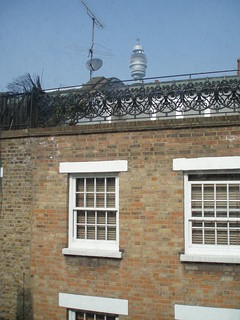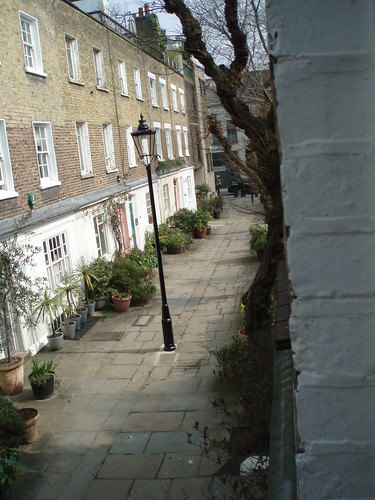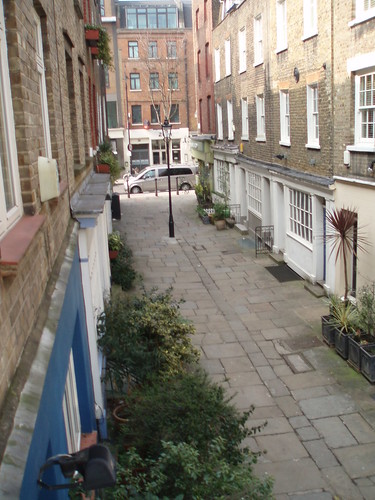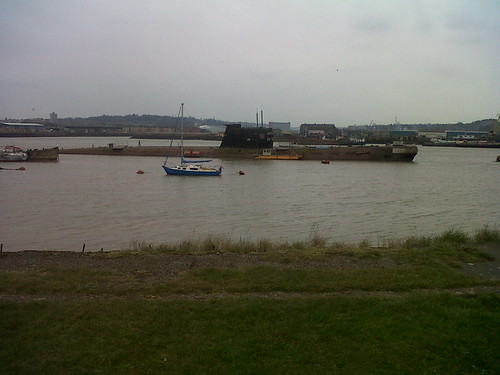It was so nice to step outside the door at the weekend and not feel that we were still in the grip of winter. The really cold easterly winds finally stopped and a warmer airflow came up from the south.
Saturday was warm, but we had some quite heavy rain during the afternoon and then Sunday was beautiful.
I took advantage, once the shopping was out of the way on Saturday, to get out in the garden and plant some more seeds. The sunflowers which had been planted the previous Saturday had germinated within five days and were now showing strong primary leaves. I didn’t want them to get too leggy so they were put outside with the sweet peas. We have them on the decking at the bottom so they can be taken into the summerhouse if there’s a danger of frost and we’ve done the same with the ivy-leaf geraniums that I grew from cuttings during the winter. Four of the eight cuttings have produced really strong plants.
On Saturday morning, I sowed cosmos (a smaller, more compact variety than the monsters we had last year), nasturtiums and cornflower. They’ve all gone in individual pots in the summerhouse where it’s a little warmer.
By the time I’d pottered around with these tasks, the sun had disappeared, it had grown a little colder and then began to rain, so I retreated to the kitchen for some test baking. I’ve agreed to make a wedding cake for Max and Inna. They’re having cup-cakes for guests, but will want a cake to cut for a photo and I said I’d make a victoria sponge - always one of Max’s favourites.
I don’t just want to make a regular victoria sponge and Margaret has been suggesting various options during the week (mainly involving butter icing). Anyway, in the morning, I’d bought extra eggs and some roll-out icing which I’ve never used before, so it would be interesting to see what I could do.
I thought I’d make a regular mix and cook it in a larger tin to see if I could get a bake that’s the same as usual, but in a bigger shape. It worked really well and I ended up with an eight-inch square sponge that was about the right depth to form one layer of a sandwich. So what I can do is bake two of those to make a larger sandwich cake and then ice it and perhaps create a smaller second tier. Decorate with cut-out hearts and a couple of figures and it should make a nice cake.
I wasn’t as well prepared as I’d thought and when it came to icing, I had no icing sugar (to prevent the roll-out icing sticking when I rolled it) and no apricot jam to brush the cake with to ensure the icing stuck. I rolled the icing out on greaseproof paper and Margaret brushed the cake with melted raspberry jam, but only had enough to do the top, not the sides. She was adamant that we should just ice the top, but I wanted to give it a try doing the sides.
It was a real problem to roll the icing out in a large enough section to cover the cake and to make it thin enough so that it wasn’t too sweet and sickly. I finally got it right and after another small debate with my technical adviser (Margaret was sure that I’d need marzipan) we were ready to apply the icing. Margaret was supposed to hold down the pop-up handles on the cake board, but when I moved the icing, she hadn’t got them down. The icing hovered over the cake for a minute while she tried to get hold of them and then fell apart in my hands. Margaret said it was my fault for not telling her and I said all she had to do was hold down the handles, but no matter, we’d just re-roll the icing. Actually, the extra practice was quite useful and second time, the icing went on quite nicely and I was pleased that I was able to cut out flaps so it folded over the sides quite nicely with a neat join. I thought it looked quite good, but Margaret was critical of the uneven top and said I’d definitely need marzipan to give me a proper smooth surface. It was time for my “no marzipan is ever coming near my cake” speech.
The cake cut well and it tasted nice. My sister had some on Sunday (as did I) and then I took a pile into work on Monday. Margaret e-mailed to say that she’d had some and the icing was disgusting, it had gone all gooey and that marzipan would prevent this (she’s not dropped the marzipan campaign) but we’d all had some at work, some more than one piece (Lawrie and probably Davina) and everyone agreed the icing was fine. I’m not sure if the cake box we have at home had caused the icing to sweat or not, but it was OK at work, not too sticky at all.
So this weekend, the plan will be to make a complete cake and have a go at icing and decorating. It could be a long day on Saturday! I’ll then keep the cake for a couple of days and see how well it cuts. There will be cake galore on Monday evening and a decent amount for work to try on Tuesday.
Sunday was a really nice day, so I was able to really enjoy being outside. We took the dogs to the park in the morning and there were lots of dogs there, so plenty of hounds for Gravel to play with. Holly is less keen to greet other dogs and is more focused on chasing and bringing back her ball. Gravel is much better and looks really well. He did blot his copybook by running off through the trees and down into the ditch at the edge of the park. He came back pretty dirty and then Holly and Mia (the Falcos’ labradoodle) thought they’d check it out and so all three dogs disappeared. Mia is a large white dog and came back with four dirty boots, while Holly and Gravel would definitely need a bath. To give them a longer walk, we went round by the runway and then cut through back into the village by Miss Green’s old yard, which is now full of geese and ducks and is always a popular walk for two bird-loving springers.
After dog-washing, I sowed some cornflower and night-scented stock directly into the ground, put some more cosmos and cornflower in pots and also did a bit of weeding. Finally, I wanted to get my dahlia tubers out of winter storage in the garage and start them off in pots. I think slugs destroyed several plants last year by biting out the growing tips, so if I start them in pots I should avoid this hazard.
I’ve inspected the tubers several times and when I last looked in late February, they had appeared a little dry. I packed them with damp compost and covered them up. When I looked on Sunday, several had started to sprout and some of the tubers had grown long roots into the compost. I’ve put some in the summerhouse and some upstairs in smaller pots where I just had single tubers which had broken away. I think they’ll be OK.
I have my motorcycle out of winter store and it’s been good to ride it to the station in the morning. The new rear tyre is working well; the old one was so squared off that it really cornered badly, trying to stay upright and then dropping into a bend too quickly. It’s much better now and riding the bike home really cheers me up. I needed it on Monday as signal problems between St Neots and Peterborough caused our train to stop at Biggleswade for about half an hour. Some people abandoned the train to get taxis, but we were on the move again in time to get to Huntingdon at the same time as some of the taxis (so Gordon told me the next day).
No such problem on Tuesday as I was staying over at Sam’s. He wasn’t working on Tuesday and so had made sea bream parcels of tin foil to cook the fish with ginger, chili and onion. It was served with brown rice and broccoli. He goes to a lot of trouble, but I wasn’t really hungry enough to do it justice. It’s nice to stay at Sam’s or Max’s in the week as it breaks up my week and saves me a long commute. Sam’s house is quite convenient as it’s five minutes walk from Walthamstow tube and so my journey to work can take me just over half an hour, which is great.
While at Sam’s I had a text from Tom to say that Lucia had been offered a place at LSE to do her PhD. I think he’ll be pleased to get back to London.
Wednesday was the day of Margaret Thatcher’s funeral and there were big crowds in London, although I was tied up in the office all day, except for a lunch in the Queen’s Arms with Darius, so I saw none of it except on TV. There were major security concerns, especially as a couple of bombs had been detonated by the finish line in the Boston marathon, killing three and injuring many more (including a runner who had both legs blown off and a three-year-old boy who had gone to watch his dad. The bombers were identified on CCTV and yesterday (Friday) there was a gun fight where a policeman and one of the bombers were killed. The other bomber escaped, but was arrested overnight. The were from Chechnya, a country that was part of the Soviet empire and which has been fighting a bitter war of independence. It’s a muslim country, but odd that people from there would want to target the US.
On Thursday, I worked from home because I had a hospital appointment with a specialist. The good news was that my lumps were just cysts; the bad news is that they might get bigger and removal would be painful and require a general anaesthetic. The advice was to do nothing unless they caused me pain and discomfort and that’s what I’ll do. In the evening, we went to the Dog in a Doublet for a meal and it was quite good (more of that later).
The weather has been good right through the week, with very little rain in the east and very strong winds through the middle of the week. We had a fen blow (a dust storm) during the week and in Elgin on the Moray Firth, the council had to send out workers to clear the roads of drifting sand. We went to the Moray Firth for a day when we were on holiday and the beaches and dunes are beautiful with fine white sand. It was quite windy that day and I can remember the fine sand blowing up from the dunes where it was dry.
Aunt Margaret, my mum’s youngest sister, died on April 7, aged 81. She had suffered from a heart condition and had then contracted cancer. Her husband George had died in 2011 and I guess that had hit her really hard. They were married in 1951, so were together for almost 60 years. I would have attended the funeral, but had three or four meetings at work that I needed to attend. It’s been really, really busy this year.








